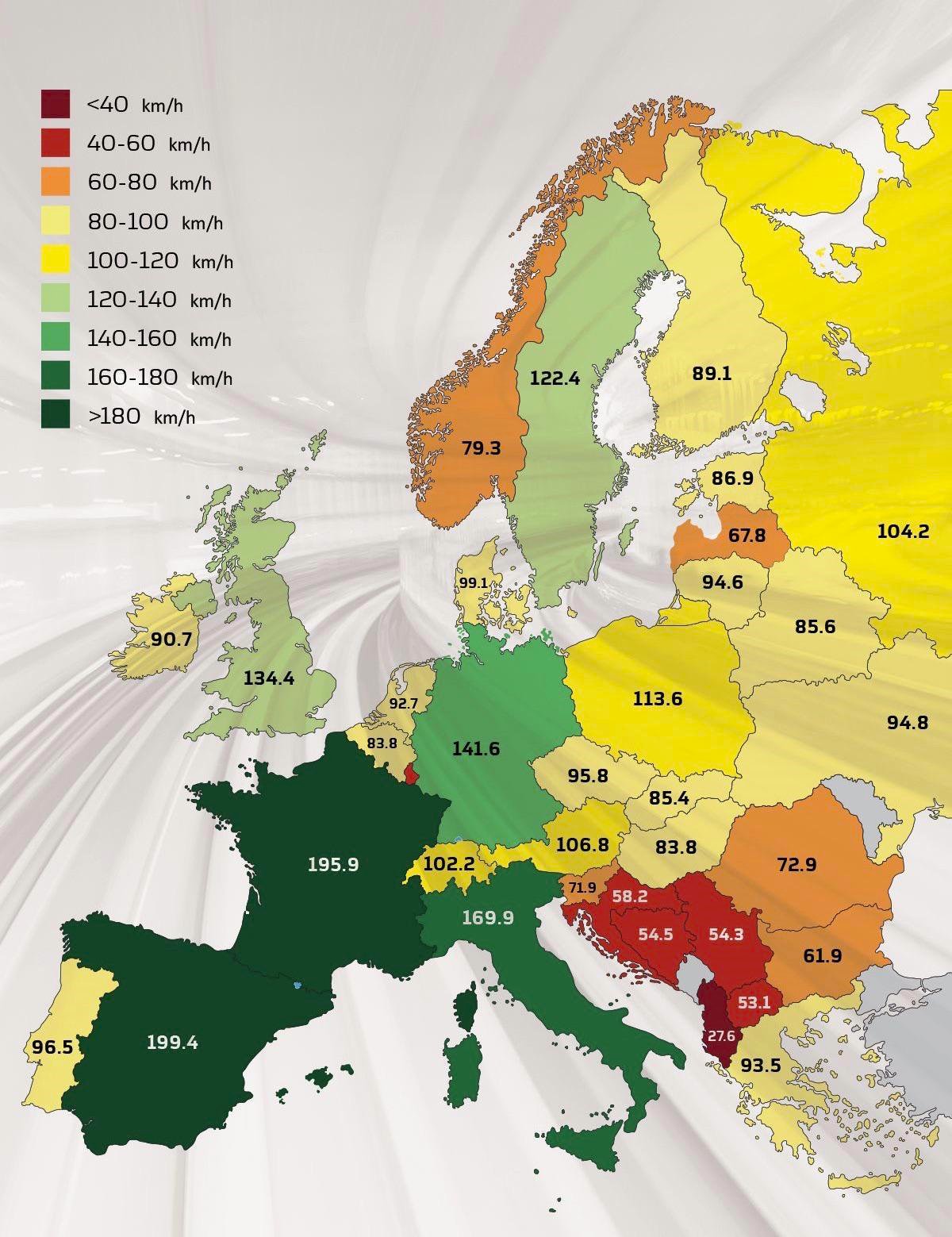Map by Reddit user tetragramaton8
If you’ve ever taken a train across Europe, you know the experience can vary wildly.
One moment you’re gliding through France at 200 km/h, sipping wine and feeling like a character in a sophisticated film. The next, you’re crawling through the Balkans at 54 km/h, wondering if walking might be faster.
This fascinating map reveals average train speeds across Europe, and the differences are more dramatic than you might think. We’re not just talking about a few kilometers per hour here and there.
We’re talking about the difference between covering ground at nearly 200 km/h versus speeds that barely outpace highway traffic.
The Speed Champions
Spain leads the pack at 199.4 km/h, having invested heavily in high-speed rail over the past few decades. France isn’t far behind with an impressive 195.9 km/h average, thanks largely to its extensive TGV network.
Switzerland clocks in at 169.9 km/h, proving that even mountainous terrain can’t stop Swiss engineering excellence.
Germany, despite its reputation for efficiency, manages 141.6 km/h. Respectable, but not quite at the level of its western neighbors.
The UK sits at 134.4 km/h, while Italy shows a surprising split personality with a tiny region in the south hitting high speeds while much of the country remains uncolored on this map.
The Struggling South and East
Here’s where things get interesting. The Balkans paint a much slower picture. Serbia, Bosnia and Herzegovina, and North Macedonia all hover in the 50s, with some areas barely breaking 60 km/h. Romania and Bulgaria aren’t much better, sitting in the 60 to 80 km/h range.
This isn’t about lazy engineering or lack of ambition. It’s about economics, infrastructure age, terrain, and decades of different investment priorities. Building and maintaining high-speed rail requires enormous capital, and many of these countries are working with networks that date back generations.
The Nordic Surprise
Scandinavia presents an interesting middle ground. Sweden manages 122.4 km/h, while Norway lags at 79.3 km/h. Finland hits 89.1 km/h.
These countries have the money for better rail, but sparse populations and vast distances make the investment calculus different. When you’re connecting relatively small cities across huge stretches of forest and mountain, high-speed rail becomes a harder sell.
What This Means for Travelers
If you’re planning a European rail adventure, this map is your friend. Budget extra time for Eastern European legs of your journey, and enjoy the high-speed comfort of western routes. The price difference often reflects these speed gaps, too.
The good news? Many countries are investing in upgrades. The bad news? Catching up to France’s TGV network won’t happen overnight.
Help us out by sharing this map:
